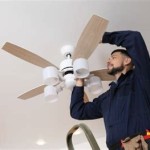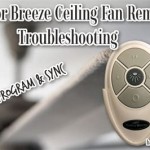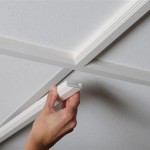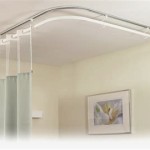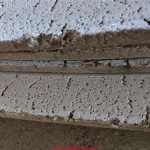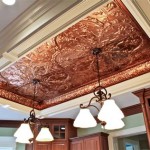What To Clean Popcorn Ceiling With: A Comprehensive Guide
Popcorn ceilings, also known as acoustic ceilings, were widely used in residential construction from the 1950s to the 1980s. Their textured surface was initially favored for its ability to dampen sound and conceal imperfections. However, over time, these ceilings tend to accumulate dust, cobwebs, and even stains, necessitating regular cleaning. The delicate nature of the texture requires a gentle and careful approach to avoid damage. This article provides a detailed guide on what to clean popcorn ceilings with and the necessary techniques to maintain their appearance without causing harm.
Before embarking on any cleaning process, it is crucial to identify whether the popcorn ceiling contains asbestos. Asbestos was a common component in these ceilings until it was banned due to its health hazards. If there is any suspicion that the ceiling contains asbestos, it is imperative to contact a professional asbestos abatement service. Disturbing an asbestos-containing ceiling can release harmful fibers into the air, posing a significant health risk. Only qualified professionals should handle the identification and removal of asbestos.
Assuming the popcorn ceiling is asbestos-free, several methods can be employed to clean it effectively. The choice of method depends on the severity of the dirt and stains, as well as the individual's comfort level and available tools. Dry cleaning methods are typically recommended for general dust and cobweb removal, while more involved wet cleaning techniques are reserved for tackling stains and more ingrained dirt.
Dry Cleaning Methods for Popcorn Ceilings
Dry cleaning is the preferred method for routine maintenance and light cleaning of popcorn ceilings. These methods minimize the risk of damaging the texture and causing the popcorn to detach from the ceiling. The primary tool used in dry cleaning is a soft-bristled brush attachment for a vacuum cleaner.
The vacuum cleaner should be set to its lowest suction setting to prevent the strong airflow from dislodging the popcorn texture. Gently move the brush attachment across the ceiling in a slow, overlapping motion. Pay particular attention to corners and areas where dust tends to accumulate. It is advisable to wear a dust mask and eye protection to avoid inhaling dislodged particles. This process is effective for removing surface dust, cobwebs, and loose debris.
Another effective dry cleaning tool is a microfiber duster with an extendable handle. The soft microfiber material attracts and traps dust without requiring excessive pressure. Similar to vacuuming, use gentle, overlapping strokes to cover the entire ceiling surface. This method is particularly useful for reaching high ceilings without the need for a ladder. Regularly clean the microfiber duster head to maintain its effectiveness. This method is a good option for removing light dust and is less likely to dislodge popcorn texture than vacuuming.
A third dry cleaning option involves using a clean, dry sponge mop. The mop head should be made of a soft, non-abrasive material to prevent scratching or damaging the ceiling. Gently press the mop against the ceiling and wipe across the surface in a straight motion. Rotate the mop head frequently to ensure a clean surface is always in contact with the ceiling. This method is suitable for removing larger particles of dust and dirt, and can be particularly effective in larger rooms.
Wet Cleaning Methods for Popcorn Ceilings
Wet cleaning is necessary for removing stains and more deeply embedded dirt from popcorn ceilings. However, this method carries a higher risk of damaging the texture and should be approached with caution. It is advisable to test any cleaning solution in an inconspicuous area first to ensure it does not discolor or damage the ceiling.
The simplest wet cleaning solution is a mixture of warm water and mild dish soap. Use a spray bottle to lightly mist the ceiling with the solution. Avoid saturating the ceiling, as excessive moisture can cause the popcorn texture to sag or fall off. Allow the solution to sit for a few minutes to loosen the dirt. Then, gently blot the area with a clean, damp sponge. Avoid rubbing, as this can damage the texture. Rinse the sponge frequently with clean water to remove any dirt or soap residue.
For more stubborn stains, a solution of water and white vinegar can be used. Vinegar is a natural cleaning agent that can effectively remove stains and odors. Mix equal parts water and white vinegar in a spray bottle and apply it to the stained area. Allow it to sit for a few minutes before blotting with a clean, damp sponge. The vinegar scent will dissipate as the ceiling dries. This solution is particularly effective for removing water stains and mildew.
A specialized popcorn ceiling cleaner can also be used. These products are designed to safely remove dirt and stains without damaging the texture. Follow the manufacturer's instructions carefully and test the product in an inconspicuous area first. Typically, these cleaners are applied with a sponge or cloth and then blotted dry. They often contain ingredients that help to restore the ceiling's original appearance.
Key Considerations When Cleaning Popcorn Ceilings
Several factors need to be considered before and during the cleaning process to ensure the best possible outcome and minimize the risk of damage. These considerations include preparation, technique, and aftercare.
Preparation is paramount. Before starting any cleaning process, protect the floor and furniture with drop cloths. Remove any loose items from the room and cover anything that cannot be moved. Wear protective clothing, including a dust mask, eye protection, and gloves. Ensure adequate ventilation in the room by opening windows or using a fan. Good preparation will minimize cleanup and protect the surrounding environment.
Technique is equally important. Always work in small sections and use gentle, overlapping motions. Avoid applying excessive pressure or saturating the ceiling with cleaning solution. Spot clean stains rather than attempting to clean the entire ceiling. If the popcorn texture begins to come loose, stop immediately and allow the area to dry completely. A key is to always test any cleaning solution in a hidden part of the ceiling before doing a big clean to see if it messes it up.
Aftercare is often overlooked but crucial for maintaining the appearance of the ceiling. Once the cleaning process is complete, allow the ceiling to air dry completely. Avoid using fans or heaters to speed up the drying process, as this can cause uneven drying and potential damage. Once the ceiling is dry, inspect it for any remaining stains or damaged areas. If necessary, touch up any imperfections with a popcorn ceiling repair compound. Regular maintenance, such as dusting with a microfiber duster, will help prevent future buildup of dirt and stains.
In situations where the popcorn ceiling is severely stained or damaged, professional cleaning or removal may be the best option. Professional cleaning services have the experience and equipment necessary to safely and effectively clean popcorn ceilings. Removal is a more drastic measure, but it can be the only solution for ceilings that are heavily stained, damaged, or contain asbestos. However, removing a popcorn ceiling is a messy and labor-intensive process that is best left to professionals. It will change the look and feel of the room permanently, but this also provides an opportunity to modernize the space.
The frequency of cleaning a popcorn ceiling depends on various factors, including the location of the room, the presence of pets or smokers, and the overall cleanliness habits of the household. In general, popcorn ceilings should be dusted regularly, at least once a month, to prevent the buildup of dust and cobwebs. Wet cleaning should only be performed when necessary to remove stains or more ingrained dirt. Regular dusting and occasional spot cleaning will help to maintain the appearance of the ceiling and prolong its lifespan.
Ultimately, understanding what to clean popcorn ceiling with involves considering the delicate nature of the texture and using appropriate methods and tools. By following the guidelines outlined in this article, individuals can effectively clean their popcorn ceilings without causing damage, ensuring that these once-ubiquitous architectural features remain an integral part of their homes for years to come.

How To Clean A Popcorn Ceiling Pro Housekeepers

Clean Dust And Debris From Popcorn Ceilings In Just Minutes Remove Dirt Old Ceiling

How To Clean A Popcorn Ceiling Pro Housekeepers

How To Clean A Popcorn Ceiling Merry Maids

How To Remove And Clean Popcorn Ceilings Encore Painting Ltd

3 Ways To Clean A Popcorn Ceiling Wikihow

3 Ways To Clean A Popcorn Ceiling Wikihow

How To Remove Popcorn Ceilings And When You Should Call A Professional The Seattle Times

How To Clean Popcorn Ceiling Molly Maid

Popcorn Ceilings Are The Worst When It Comes To Collecting Dust From T Cleaningtok Tiktok
Related Posts


